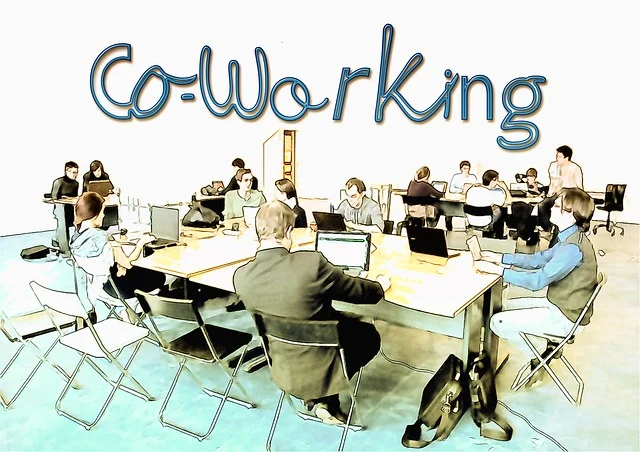Unraveling the Psychology of Team Dynamics

Team dynamics, a fundamental aspect of organizational psychology and social psychology, explores how individuals collaborate, interact, and perform within group settings. From sports teams to corporate workgroups, understanding the psychological underpinnings of team dynamics is crucial for optimizing team performance, fostering cohesion, and achieving collective goals.


Page Contents
- 1 Unraveling the Psychology of Team Dynamics
- 2 5 Key Elements of Team Dynamics
- 3 Team dynamics, leadership styles, and conflict resolution are interconnected elements crucial for effective teamwork and organizational success. Let’s delve into each of these areas with examples:
- 4 Psychological Theories and Models
- 5 Here are examples and explanations for Meredith Belbin’s Team Roles theory and Hackman’s Input-Process-Output (IPO) model:
- 6 Applications in Real-World Contexts
- 7 Contemporary Issues and Future Directions
- 8 Conclusion
Unraveling the Psychology of Team Dynamics
5 Key Elements of Team Dynamics
Team dynamics encompass a range of psychological factors that influence group behavior and performance:
- Roles and Responsibilities: Within any team, individuals often assume specific roles based on their skills, expertise, and personality traits. Clarifying roles and responsibilities helps distribute tasks effectively and align individual strengths with team goals.
- Communication Patterns: Effective communication is essential for team success. Communication dynamics—such as clarity of information, active listening, and feedback mechanisms—affect coordination, decision-making, and conflict resolution within teams.
- Leadership Styles: Leadership plays a critical role in shaping team dynamics. Different leadership styles—such as democratic, autocratic, or transformational—impact team motivation, decision-making processes, and overall team morale.
- Group Cohesion: Cohesion refers to the degree of camaraderie, trust, and unity among team members. High cohesion fosters collaboration, mutual support, and a positive team climate, enhancing team satisfaction and performance.
- Conflict Resolution: Conflicts are inevitable in team environments due to differences in opinions, goals, or interpersonal dynamics. Effective conflict resolution strategies—such as negotiation, mediation, or problem-solving approaches—promote constructive dialogue and maintain team harmony.
Team dynamics, leadership styles, and conflict resolution are interconnected elements crucial for effective teamwork and organizational success. Let’s delve into each of these areas with examples:
1. Team Dynamics:
Team dynamics refer to the behaviors and interactions of team members that impact team performance. Key elements include:
- Communication: Effective communication is vital for sharing information, ideas, and feedback. It involves both verbal and non-verbal cues and ensures clarity among team members.
- Roles and Responsibilities: Clearly defined roles prevent ambiguity and overlap, ensuring that each member knows their duties and contributions to the team.
- Trust and Collaboration: Trust fosters a supportive environment where team members can collaborate, share resources, and rely on each other’s expertise.
- Conflict Management: Addressing conflicts constructively helps maintain team harmony and allows for differing viewpoints to be heard and resolved.
Example: In a marketing team, clear communication about campaign goals and responsibilities ensures that each member understands their tasks. Regular team meetings foster collaboration and brainstorming sessions where trust enables open discussion of ideas.
2. Leadership Styles:
Leadership styles influence how leaders interact with their teams, make decisions, and motivate others. Common styles include:
- Democratic: Involves team input in decision-making, fostering a sense of ownership and commitment among members.
- Autocratic: Centralizes decision-making authority with the leader, ensuring quick decisions but potentially limiting team creativity and morale.
- Transformational: Inspires and motivates through vision and charisma, encouraging innovation and higher performance.
- Laissez-Faire: Provides minimal guidance, allowing team members considerable freedom in decision-making and task completion.
Example: A project manager using a democratic leadership style consults with team members on project milestones and strategies, encouraging diverse perspectives and enhancing team morale through shared ownership.
3. Conflict Resolution:
Conflict is inevitable in team dynamics but can be managed effectively through various approaches:
- Collaboration: Involves addressing the issue openly, understanding each party’s concerns, and finding mutually acceptable solutions.
- Compromise: Requires each side to give up something to reach a middle ground, ensuring that both parties feel their interests are considered.
- Avoidance: Temporarily sidestepping the conflict if it is minor or can be addressed later without significant impact on team goals.
- Competitive: Asserting one’s own position without considering the other party’s concerns, which may be necessary in urgent or high-stakes situations.
Example: A conflict arises between two designers regarding the visual direction of a project. Using collaboration, they discuss their design preferences and find a compromise that integrates aspects of both designs, ensuring a cohesive final product.
Fostering a Productive and Harmonious Work Environment
Effective team dynamics, leadership styles, and conflict resolution strategies are integral to fostering a productive and harmonious work environment. Understanding these elements allows teams to leverage strengths, manage differences constructively, and achieve collective goals efficiently. By implementing appropriate strategies and styles, leaders can nurture a culture of collaboration, innovation, and resilience within their teams.
Psychological Theories and Models
Several psychological theories and models provide frameworks for understanding team dynamics:
- Tuckman’s Stages of Group Development: Bruce Tuckman proposed a model of team development consisting of stages—forming, storming, norming, performing, and adjourning—that teams typically go through as they mature and become effective.
- Belbin’s Team Roles: Meredith Belbin identified nine team roles—such as the “Coordinator,” “Shaper,” or “Implementer”—each contributing unique strengths to team dynamics. Understanding these roles helps in building balanced and productive teams.
- Hackman’s Input-Process-Output Model: Richard Hackman’s model emphasizes inputs (team composition), processes (team interactions and norms), and outputs (team performance) as critical factors influencing team dynamics and effectiveness.
Here are examples and explanations for Meredith Belbin’s Team Roles theory and Hackman’s Input-Process-Output (IPO) model:
Meredith Belbin’s Team Roles Theory:
Meredith Belbin identified nine team roles that individuals adopt within teams, each contributing to the team’s effectiveness in different ways. Here are brief explanations and examples of each role:
- Planter:
- Explanation: Plants are creative and innovative thinkers who generate new ideas and approaches. They often come up with unconventional solutions to problems.
- Example: In a marketing team, a Planter might propose a unique advertising campaign that grabs attention through unconventional means, sparking creative discussions among team members.
- Resource Investigator:
- Explanation: Resource Investigators are outgoing and enthusiastic individuals who explore opportunities outside the team. They establish contacts, gather information, and bring external insights back to the team.
- Example: A Resource Investigator in a project team might attend industry conferences, network with potential clients, and gather market trends to inform the team’s strategic decisions.
- Coordinator:
- Explanation: Coordinators are strong leaders who clarify goals, delegate tasks, and ensure that team members work effectively together. They often facilitate decision-making and resolve conflicts.
- Example: In a research team, a Coordinator might organize regular meetings, assign research topics to team members based on their expertise, and ensure deadlines are met through effective coordination.
- Shaper:
- Explanation: Shapers are dynamic and action-oriented individuals who challenge the team to improve and strive for success. They push the team to maintain momentum and achieve goals.
- Example: In a sales team, a Shaper might set ambitious sales targets, encourage healthy competition among team members, and drive initiatives to exceed quarterly revenue goals.
- Monitor Evaluator:
- Explanation: Monitor Evaluators are analytical and objective thinkers who assess ideas and proposals critically. They provide balanced viewpoints and make decisions based on careful consideration.
- Example: A Monitor Evaluator in a project review meeting might analyze project risks, evaluate cost-benefit analyses of different approaches, and recommend the most viable solution based on data and logic.
- Teamworker:
- Explanation: Teamworkers are supportive and cooperative team members who build rapport, mediate conflicts, and ensure harmony within the team. They are reliable and empathetic.
- Example: In a customer service team, a Teamworker might listen actively to customer complaints, collaborate with colleagues to resolve issues efficiently, and maintain a positive team atmosphere during busy periods.
- Implementer:
- Explanation: Implementers are practical and disciplined individuals who turn ideas into action. They organize resources, create plans, and ensure tasks are executed according to established procedures.
- Example: An Implementer in a manufacturing team might oversee production schedules, coordinate with suppliers for timely delivery of materials, and monitor quality control measures to meet production targets.
- Completer Finisher:
- Explanation: Completer Finishers are meticulous and detail-oriented individuals who ensure tasks are completed to high standards. They identify errors, polish final deliverables, and meet deadlines.
- Example: In a software development team, a Completer Finisher might conduct thorough testing of a new software application, debug any issues, and ensure the user interface meets usability standards before launch.
- Specialist:
- Explanation: Specialists are individuals with specialized knowledge or skills that are crucial to the team’s success. They provide technical expertise and advice in specific areas.
- Example: In a legal team, a Specialist might offer expertise in intellectual property law, review contracts for compliance, and provide legal counsel on complex issues related to corporate governance.
Hackman’s Input-Process-Output (IPO) Model:
Richard Hackman’s Input-Process-Output (IPO) model focuses on the factors that contribute to team effectiveness, emphasizing the importance of both contextual inputs and the team’s internal processes. Here’s how it breaks down:
- Inputs:
- Explanation: Inputs are the factors that shape the context in which the team operates. These include team composition, organizational support, resources, and task characteristics.
- Example: In a project team, inputs could include the team members’ skills and expertise, the clarity of project goals and requirements, availability of necessary resources (like technology and funding), and support from senior management.
- Processes:
- Explanation: Processes refer to the interactions and activities that occur within the team as they work together to accomplish tasks. This includes communication patterns, decision-making processes, conflict resolution methods, and coordination efforts.
- Example: Effective processes in a design team might involve regular brainstorming sessions to generate ideas, structured feedback loops for design iterations, collaborative decision-making on design features, and clear roles and responsibilities to ensure smooth execution.
- Outputs:
- Explanation: Outputs are the results and outcomes produced by the team’s efforts. These can be tangible (such as completed deliverables or achievements of goals) or intangible (such as improved team cohesion or learning experiences).
- Example: Outputs in a sales team could include meeting or exceeding sales targets, acquiring new clients, improving customer satisfaction ratings, and developing innovative sales strategies that enhance market presence.
Hackman’s model suggests that effective teams are not solely defined by their inputs or outputs but by the quality of their internal processes, which are influenced by the contextual inputs. By focusing on optimizing both inputs (such as team composition and resources) and processes (such as communication and decision-making), teams can enhance their effectiveness and achieve superior outcomes.
Applications in Real-World Contexts
The study of team dynamics has practical implications across various fields:
- Business and Organizations: Enhancing teamwork, leadership development, and organizational effectiveness. For example, studies on team effectiveness in business environments highlight the role of shared goals, mutual accountability, and effective communication in achieving business objectives.
- Sports Psychology: Optimizing team performance, improving communication among athletes, and fostering team cohesion. Psychological principles in sports teams focus on enhancing motivation, managing stress, and promoting resilience during competitions.
- Healthcare Teams: Improving collaboration among healthcare professionals to enhance patient care and safety. Research in healthcare teams explores communication patterns, leadership dynamics, and teamwork training to reduce medical errors and improve patient outcomes.

Contemporary Issues and Future Directions
In today’s dynamic and globalized world, emerging trends and challenges in team dynamics include:
- Virtual Teams: Managing team dynamics in remote work environments, where digital communication tools influence team interactions and collaboration.
- Diversity and Inclusion: Addressing cultural diversity, gender dynamics, and inclusive practices within teams to leverage diverse perspectives and foster innovation.
- Team Resilience: Building resilience in teams to adapt to change, overcome setbacks, and maintain high performance under pressure.
Conclusion
Understanding the psychology of team dynamics is essential for creating high-performing teams in various contexts. By applying psychological theories, models, and research findings, organizations, sports coaches, healthcare professionals, and leaders can optimize teamwork, enhance communication, resolve conflicts effectively, and ultimately achieve shared goals. As research continues to evolve, ongoing exploration of team dynamics promises to provide deeper insights into human behavior, collaboration strategies, and effective team leadership in the ever-changing landscape of teamwork.






